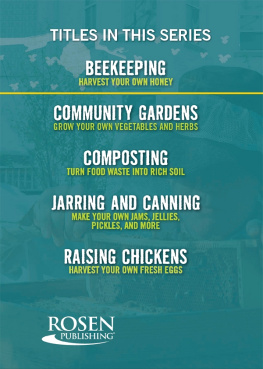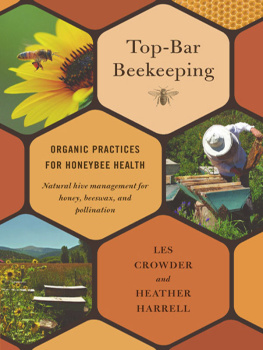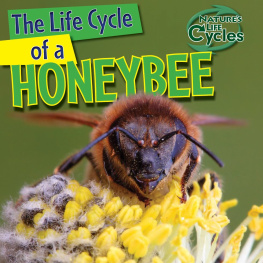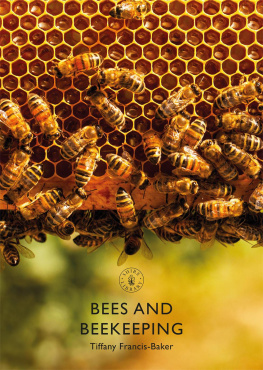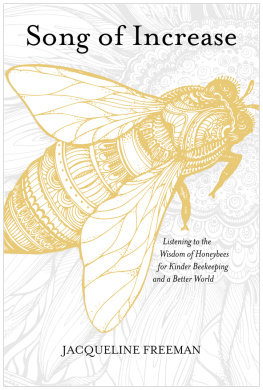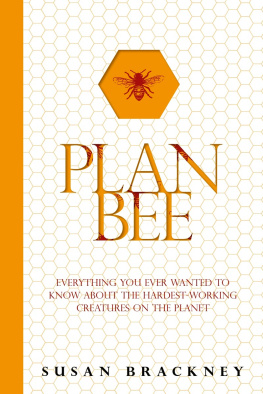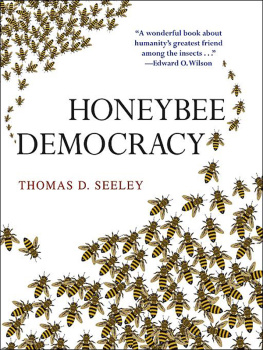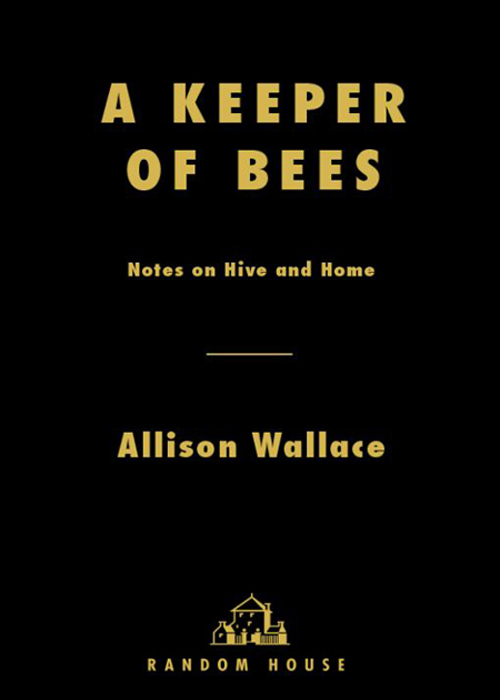

Table of Contents
For Blake
Youll begin to understand the life of bees once youre clear about the fact that the bee lives as if it were in an atmosphere pervaded thoroughly by love.
RUDOLF STEINER, Bees (translated from the German by Thomas Braatz)
Beekeeping is farming for intellectuals.
SUE HUBBELL, A Book of Bees
Preface
I think I could turn and live with animals, Walt Whitman wrote in Song of Myself. They are so placid and self-containd, / I stand and look at them long and long. He goes on:
They do not sweat and whine about their condition,
They do not lie awake in the dark and weep for their sins,
They do not make me sick discussing their duty to God,
Not one is dissatisfied, not one is demented with the mania of owning things,
Not one kneels to another, nor to his kind that lived thousands of years ago,
Not one is respectable or unhappy over the whole earth.
Although most commentary focuses on the acerbic lines comparing animals to the poets fellow Americans, Wendell Berry, one of my favorite authors, made me look twice at the opening line. I think I could turn and live with animals would have been written, Berry asserts, only by someone immersed in a culture generally unaware that we do live with animals. Always have, and in some way or other always will. (For several intimate illustrations of this fact, see Roger M. Knutsons charming little books Furtive Fauna and Fearsome Fauna, subtitled as field guides to the creatures that live on us and within us.) Indeed, we dont merely live with animals, we live at all because they livebecause they do the amazing, phenomenal things they do. Working in tandem with plants, animals give us by their very lives and deaths fertile soil, clean water, and clean air. And of course, they make it possible for us to eat, even those among us who do not eat any animals per se. This is especially true of honeybees, who pollinate not just the wildflowers gracing a spring meadow, but also many of the crops upon which we all depend.
Human beings have known the value of bees as an even more direct source of foodbe it the honey they make or their own crunchy little bodiesfor as long as theyve been human. Yet none of these features drew me into the honeybees world initially, although Ive always enjoyed a bit of amber syrup on my toast and in my coffee, and although I was raised by a woman who swears by the consumption of locally produced honey to alleviate allergies to local pollens. No, my interest in bees took off when I discovered in one memorable season their own mixed nature: gentle, sun-dappled handmaidens to the hive in one moment, fierce little murderous crazies the nextthough only if you get seriously in their way. The full story is told later in these pages, so for now Ill just say this was the summer I decided to live consciously with animals (besides my dog) for the rest of my days. From there it was a small step to another, closely related insight: that we dont just live with animals, we also think with them. We humans have thought with honeybees for a very long time indeed: they have figured prominently in religious ideas and imagery (for example, the notion that honey is heaven-sentliterally, that it falls to earth from aboveshows up in many ancient, polytheistic belief systems, lending it a sacred quality); in fables and folklore (such as the old European insistence that news of a beekeepers death must be broken gently to the bees themselves, else they, too, will perish); and in symbols of and metaphors for concepts like hard work, cooperation, thrift, purity, even political economy.
Sometimes the honeybee leads my own thoughts down such well-worn paths, but now and again she catches and follows the trail of scents coming from other, less heavily traveled directions, and I stay on her heels (that is, I would if she had any). Together we go traipsing, for instance, after the kinetic, ever-changing nature of biological creation and re-creation, in which every living being participates, consciously or otherwise. Or we attend awhile to the enduring appeal (to both of us) of moving on to new scenes when the old ones seem to have lost their power to answer some deep-seated, inexpressible yearning. Then, too, theres the tension that arises when the opposite of this urge to move on kicks in: here I mean the urge to stay still, to put down a long taproot, to say with the conviction of a Mormon that this is the place. And finally, my honeybee and I go nosing after the most compelling question I know to askexplored far more ably by philosophers and theologians than I could ever managethe question whether anything in the physical world can ever reveal metaphysical truth.
While following the bee down these twisting lanes, Im also trying to keep a steady eye on the creature herself. A child asked Whitman, What is the grass? and the poet responded that he did not know. Neither do I know what exactly is Apis mellifera, or honey, or wax, or the flowers or rain or sun or soil that, together, make all the rest happen. But I do know there are worse ways to squander ones time than trying to find out. Until that happy day of revelation arrives, I content myself with the hive as a transporting vision of the simplest perfection that seems possible on this earth: glowing gold and bronze, its many adepts unselfconsciously engaged in creative, productive work, their remarkable wax combs blessed with plenty and holding out the promise of more to come.
If you who read this would don the nylon veilwould take up beekeepingunderstand right now that this isnt your how-to book, though youll certainly need one of those. (Make that a half dozen.) This is by turns a how-not-to book, and a how-is-that-possible? book, the musings not of an expert but of a bumbling lover, whose contemplative disposition is frequently at odds with her desire to achieve a decent honey harvest. This is a modest record of things sought after more often than found, of things longed for more often than obtained. Notions hinted at, in other words, by glimpses we all get now and then of a restive, tireless, blossom-probing, black-and-topaz honeybee.
To those who helped along the way I owe a great many thanks, starting with Jamey Tippens and Nettie Lassiter, for turning my head with one small hive, and for offering friendship and support across years of changing circumstances. Tom Stumpfbook conversationalist par excellenceintroduced me to Virgil and his bees, and to other wonderful classical and neoclassical writers besides. Doug Fox, David Doussourd, Stella Capek, Linda Hasselstrom, Norb Schedler, John Parrack, William Rossi, and Doug Corbitt all assisted in their various ways with the research that went into these chapters. I am indebted to Rick Scott and the University of Central Arkansas for freeing me up periodically from teaching to write. Rick also read and critiqued portions of the manuscript, as did Lisa Carl and T. R. Hummer. The indefatigable Rebecca Barnhouse read all of it thoughtfully, and passed along many wonderful honeybee-themed news articles and lines of medieval poetry; her encouragement, wry wit, and friendship over the years have made more difference than I can say, and not just to my writing. Several friends and colleagues with the Association for the Study of Literature and Environment (ASLE) provided terrific encouragement, too, not least among them Cheryll Glotfelty, Mike Branch, and Sydney Landon Plum. Many college students Ive been honored to know were also helpful, if indirectlyeven the one whose arrogant pronouncement I feel no need to play fair with nature shocked me into thinking hard about why we all should.
Next page

